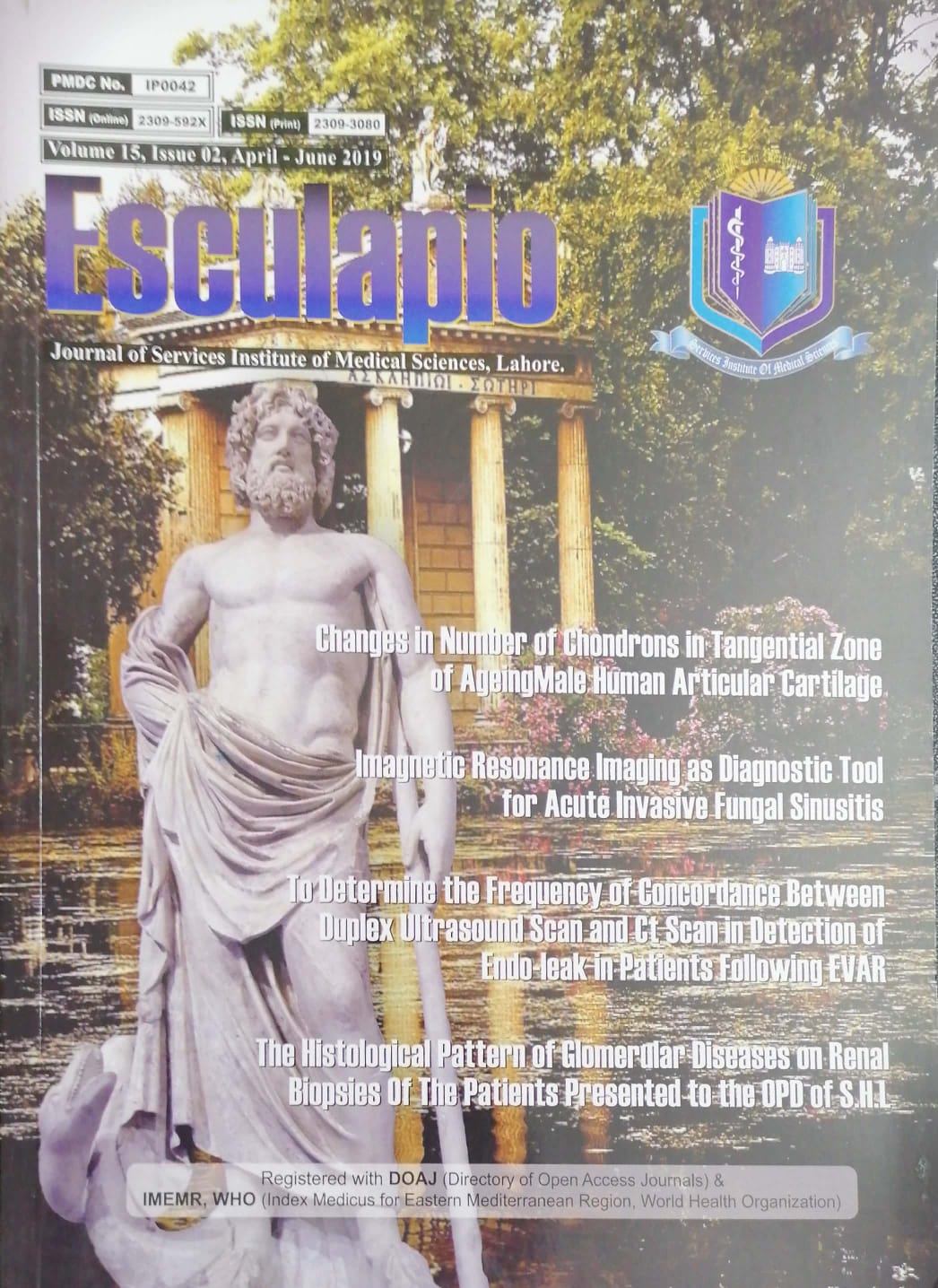Imagnetic Resonance Imaging as Diagnostic Tool for Acute Invasive Fungal Sinusitis
DOI:
https://doi.org/10.51273/esc19.71526Keywords:
fungal sinusitis, magnetic resonance imaging, histopathologyAbstract
Objective: To measure the diagnostic accuracy of magnetic resonance imaging for diagnosis of
acute invasive fungal sinusitis taking histopathology as gold standard.
Methods: After obtaining permission from ethical committee of hospital, 150 patients meeting
the study criteria were recruited in the study which was conducted in Department of Diagnostic
Radiology, Sir Ganga Ram Hospital, Lahore. Informed consent was obtained. Demographic
information (name, age, gender, contact) was also obtained. Then patients underwent MRI by
using 1.5T magnets by a single senior radiologist. The imaging was performed with specified
sinus views and sequences including T1-weighted images in axial plane, T2-weighted images
with fat saturation in axial and coronal planes, and also contrast enhanced T1-weighted images
with fat saturation in axial and coronal planes. Then patients underwent biopsy by a single
surgical team under general anesthesia. Histopathology was then performed on the biopsy
samples obtained during sinus surgery. Reports of MRI and histopathology were compared. Out
of 150 patients who were clinically suspected of having fungal sinusitis 87 were negative for
fungal disease on histopathology.
Results: Sensitivity and Specificity of MRI for diagnosis of fungal sinusitis was 92.06% and
93.1% respectively. However positive predictive and negative predictive value for MRI for
diagnosing fungal sinusitis was 90.63% and 94.19% respectively. Overall diagnostic accuracy of
MRI was 92.67% respectively.
Conclusions: Results of this study showed high sensitivity and specificity of MRI in making the
diagnosis of fungal sinusitis. Considering the results of this study MRI can be used effectively for
diagnosing of fungal sinusitis










